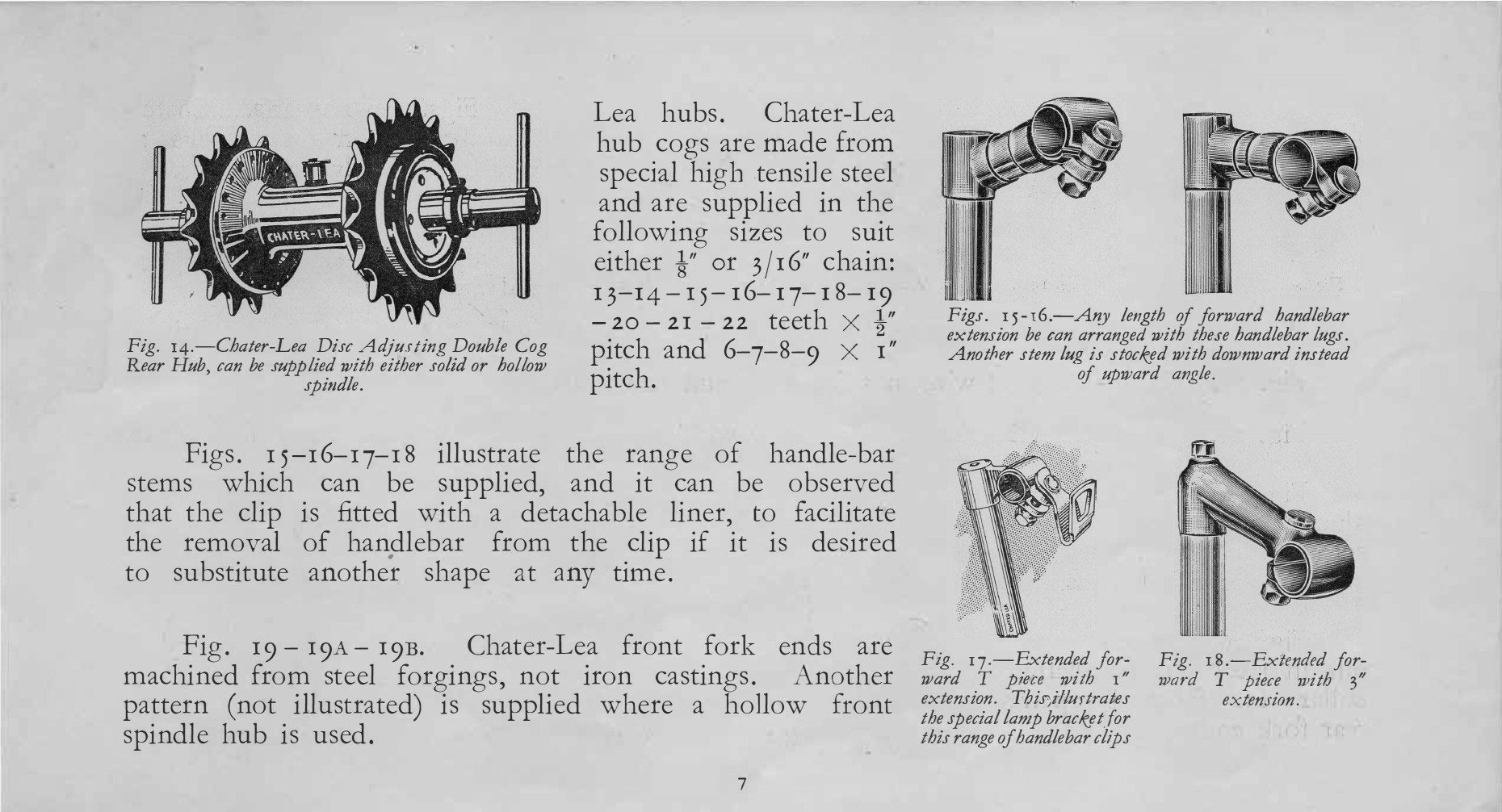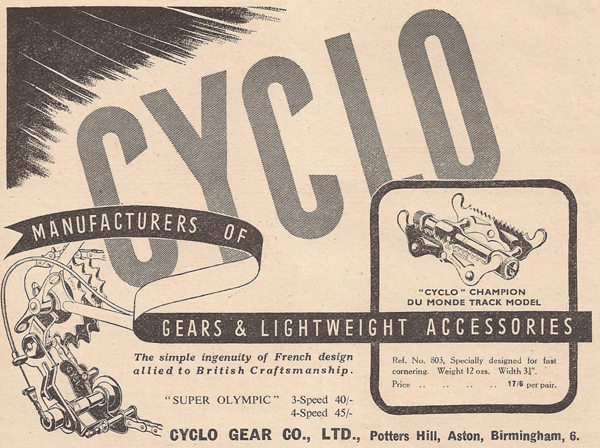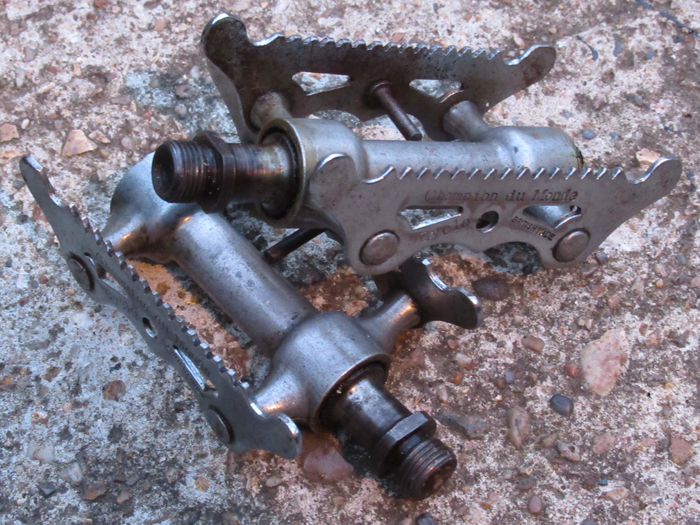Cyclo pedals
Posted: Tuesday 16th June 2020
The Cyclo Gear Co Ltd was one of the most important makers of components for lightweight cycles. Before and after World War 2, Cyclo products were extremely popular, particularly during the 1950’s when huge numbers of Benelux gear sets and Cyclo freewheels sold.
Not so well known is that Cyclo also offered a range of pedals during the post war period. In March 1946 an entry in the Trade News column in ‘Cycling’ announced two new pedal designs.
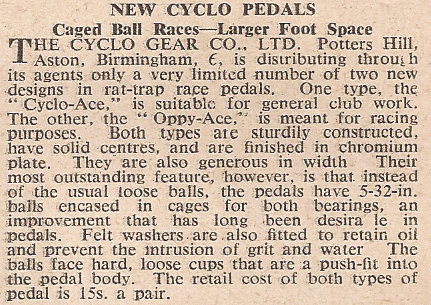
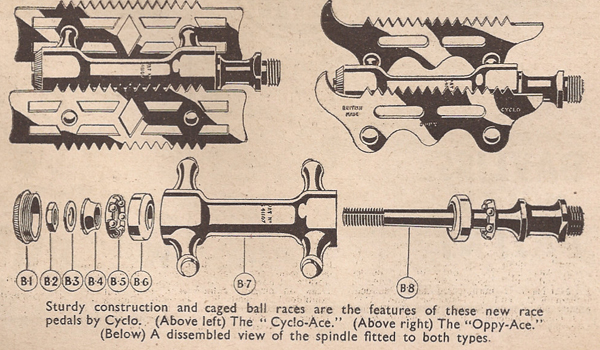
Close examination of these pedals reveals some interesting features. Both designs use the same axles, internals and end caps. The main body of both types, an alloy casting, is common to both left and right, and to both models. Therefore Cyclo only needed one alloy casting. The steel cage plates are reversible which allowed production of only one plate type per pedal design. This effectively allowed the production of two pedal designs from only 6 main components (if you exclude the pressed in steel bearing surfaces, caged bearings, cones, nuts & washers) Very clever production engineering !
Both designs are approx. 4 inches wide, this being typical of the period. I particularly like the Ace design and use these regularly. They feel wider due to the long axles and are reversible. These were aimed and the clubman’s market and weigh in at just over 1lb.
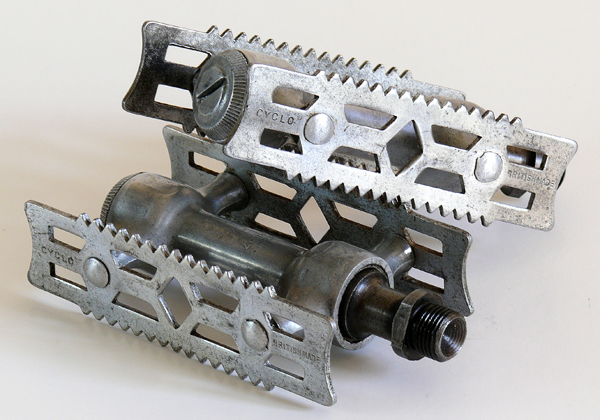
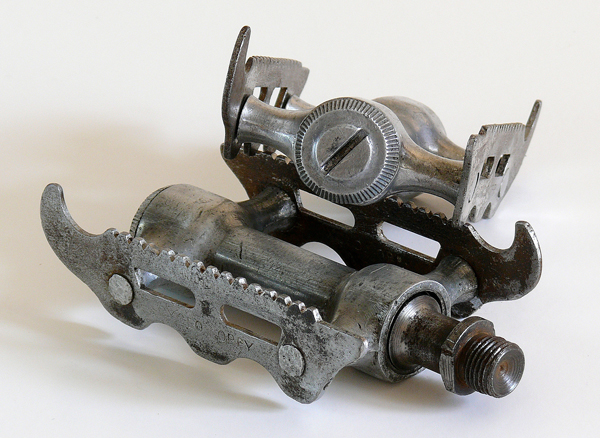
The ‘Oppy’ pedal was clearly named for Hubert Opperman. Whether he had a hand in the design is unknown to me. These pedals were designed with the racing cyclist in mind, with a weight of approx. 15 oz, which compares favourably with most competitors products at that time.
Typical approximate pedal weights of the late 1940’s :
Brampton B8 : 1lb
Webb : 1lb 1oz
Constrictor Boa : 14.5 oz
Chater Lea ‘Tommy Bar’ : 15 oz (the Chater Lea ‘Sprint’ pedal did not appear until 1954)
Holdsworth Allez : 10.5 oz (probably the lightest available at the time)
In September 1948 a new pedal, the ‘Champion Du Monde’ was advertised. This is clearly very similar to the Oppy and appears to utilise the same alloy body.
Judging by the difficulty in finding examples of any Cyclo pedals today, it has to be assumed that they were not particularly well received. Cyclo did very little to advertise their pedals and this may well be the reason. I suspect that production had ceased by the end of 1950
Steve Warne
August 2019
Posted: Tuesday 16th June 2020
Contents
This article appears in the following categories.
Upcoming Events
Whether you are looking for a gentle social meet up, or a 100-mile ride browse the community’s upcoming events and plan your next weekend outing.
